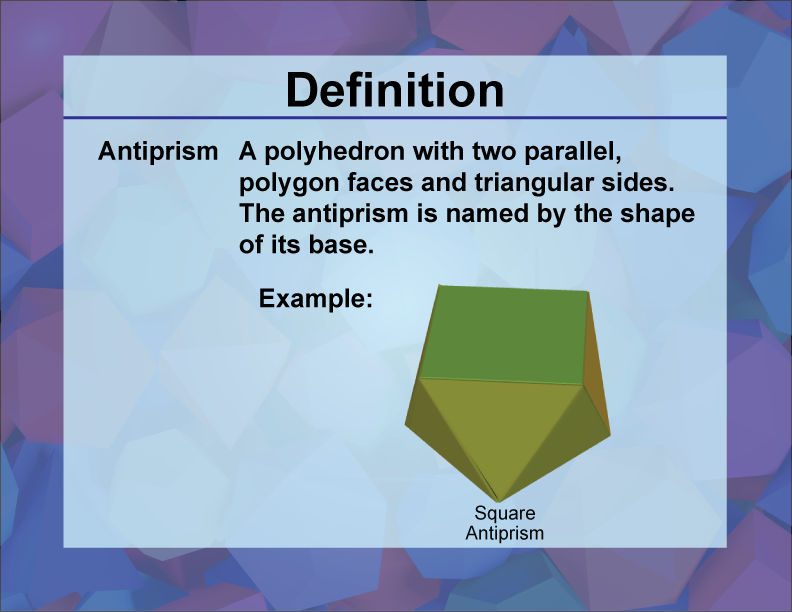
Display Title
Video Definition 1--3D Geometry--Antiprism
Display Title
Antiprism
Topic
3D Geometry
Definition
An antiprism is a polyhedron composed of two parallel copies of some particular polygon, connected by an alternating band of triangles.
Description
An antiprism is significant in geometry as it extends the concept of a prism by twisting one of the polygonal bases. This structure is relevant in various real-world applications, such as molecular chemistry, where antiprisms can represent the arrangement of atoms. The mathematical study of antiprisms involves understanding their symmetry and calculating their surface area and volume. For example, the volume V V of a regular n-sided antiprism with side length a a and height h h can be calculated using the formula:
V = (na2h)/2 cot(π/n)
Understanding antiprisms is crucial in math education as it enhances spatial reasoning and the comprehension of geometric transformations. A teacher might explain antiprisms by comparing them to regular prisms and highlighting the twisting effect that differentiates them.

For a complete collection of terms related to 3D Geometry click on this link: 3D Geometry Video Collection.
| Common Core Standards | CCSS.MATH.CONTENT.5.MD.C.3 |
|---|---|
| Duration | 1 minutes |
| Grade Range | 4 - 6 |
| Curriculum Nodes |
Geometry • 3D Geometry • 3-Dimensional Figures |
| Copyright Year | 2024 |
| Keywords | three-dimensional geometry, 3d Geometry, defnitions, glossary term |